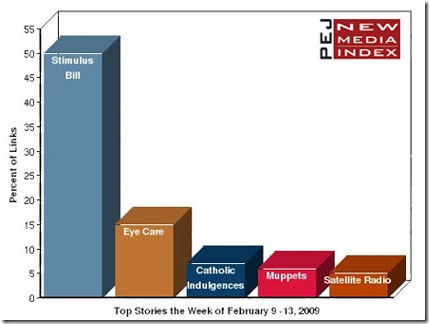The week of President Barack Obama’s inauguration, the Pew Center for Excellence in Journalism launched its New Media Index.

The NMI is a partner project to its News Coverage Index, which tracks the top five stories across traditional, U.S., print-based media on a week-to-week basis.
The NMI was designed to combat criticism that monitoring traditional media sources only is missing the boat. The Index uses Technorati and Icerocket to track which news articles are being shared and commented on the most across social networks and the blogosphere. The NMI isn’t all that exciting on its own, but when compared to the NCI, provides interesting insight into what the public is following and what the professionals are publishing.
During the first few weeks of the project, news about President Obama’s inauguration, cabinet choices and stimulus planning topped lists on both indexes, but now that Obama buzz has died down a bit, the disparity between what’s being written about and what’s growing virally is more interesting.
From Feb. 9-13, stimulus news was by far the most shared, but behind that was an article from New York Times on how to pay less for contacts and glasses. After that, the internet buzz surrounded Muppets and Satellite Radio. The NCI, by comparison, focused most on the president’s economic agenda but also on a plane crash in upstate New York and tensions in Israel.
While the NMI-NCI comparison certainly adds a new dimension of analysis to the PEJ’s coverage, there are a lot of steps they could take to improve their new tool. First, the data is mined in different time periods for each index. Comparing news trends from Feb. 9-13 and new media trends from Feb. 15 can be useless if something major happens on Feb. 14.
Next, I hope to see two expansions to both indexes. For the NMI, looking at blogs worldwide and taking in data from sources other than Technorati and Icerocket would help increase the content. The trick would be keeping analysis manageable. For both the NMI and the NCI, I hope analysts will look outside U.S. publications and monitor global trends eventually. The comparison would be helpful if users could access both local and global statistics.
Still, PEJ’s addition is an important step toward the consideration of how blogs and social utilities are entering the conversation as primary sources of news.
Sign up today to have our latest posts delivered straight to your inbox.